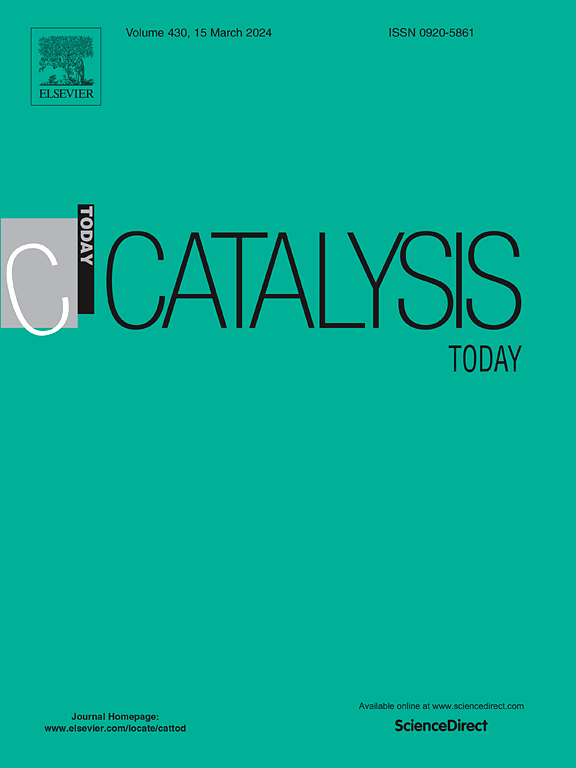碳负载非贵金属催化剂在温和条件下由5-羟甲基糠醛在1-丁醇中高效合成生物燃料2,5-二甲基糠醛
IF 5.2
2区 化学
Q1 CHEMISTRY, APPLIED
引用次数: 0
摘要
2,5-二甲基呋喃(DMF)是最有前途的液体生物燃料之一,因其在生物质能开发利用方面的潜力而备受关注。本文研究了5-羟甲基糠醛(HMF)的加氢脱氧反应(HDO)在不同金属氧化物和高表面石墨(HSAG)负载的Ni催化剂上,在间歇式反应器中,以1-丁醇为溶剂进行合成。在180 °C和30 bar H2下,催化活性和主要反应途径被发现强烈地取决于载体的性质,以及取决于所采用的商业HMF原料的杂质的存在。结果表明,HSAG载体最适合HMF的HDO,通过破坏C-O键形成DMF。此外,研究了该石墨材料负载的Co和Cu的催化性能,发现即使在没有外部氢(84 %)的情况下,Cu对DMF的收率也最高(95 %),证实了丁醇除溶剂外还可以作为氢供体。本文章由计算机程序翻译,如有差异,请以英文原文为准。
Carbon-supported non-noble metal catalysts for efficient synthesis of the biofuel 2,5-dimethylfurfural from 5‑hydroxymethylfurfural in 1-butanol under mild conditions
2,5-Dimethylfuran (DMF), which is one of the most promising liquid biofuels, has garnered significant attention due to its potential to develop the utilization of biomass energy. In this work, its synthesis through the hydrodeoxygenation reaction (HDO) of 5-hydroxymethylfurfural (HMF) has been studied on Ni catalysts supported on various metal oxides and a high surface graphite (HSAG), in a batch reactor, using 1-butanol as a solvent. At 180 °C and under 30 bar H2, the catalytic activity and the predominant reaction route were found to be strongly conditioned by the nature of the support, as well as by the presence of impurities depending on the commercial HMF feedstock employed. The HSAG support turned out to be the most suitable for the HDO of HMF leading to the formation of DMF, via rupture of the C-O bonds. Additionally, the catalytic performance of Co and Cu supported on this graphitic material was studied, being Cu the one that offers the best yields to DMF (95 %), even in the absence of external hydrogen (84 %), confirming that butanol acts as a hydrogen donor in addition of solvent.
求助全文
通过发布文献求助,成功后即可免费获取论文全文。
去求助
来源期刊

Catalysis Today
化学-工程:化工
CiteScore
11.50
自引率
3.80%
发文量
573
审稿时长
2.9 months
期刊介绍:
Catalysis Today focuses on the rapid publication of original invited papers devoted to currently important topics in catalysis and related subjects. The journal only publishes special issues (Proposing a Catalysis Today Special Issue), each of which is supervised by Guest Editors who recruit individual papers and oversee the peer review process. Catalysis Today offers researchers in the field of catalysis in-depth overviews of topical issues.
Both fundamental and applied aspects of catalysis are covered. Subjects such as catalysis of immobilized organometallic and biocatalytic systems are welcome. Subjects related to catalysis such as experimental techniques, adsorption, process technology, synthesis, in situ characterization, computational, theoretical modeling, imaging and others are included if there is a clear relationship to catalysis.
 求助内容:
求助内容: 应助结果提醒方式:
应助结果提醒方式:


